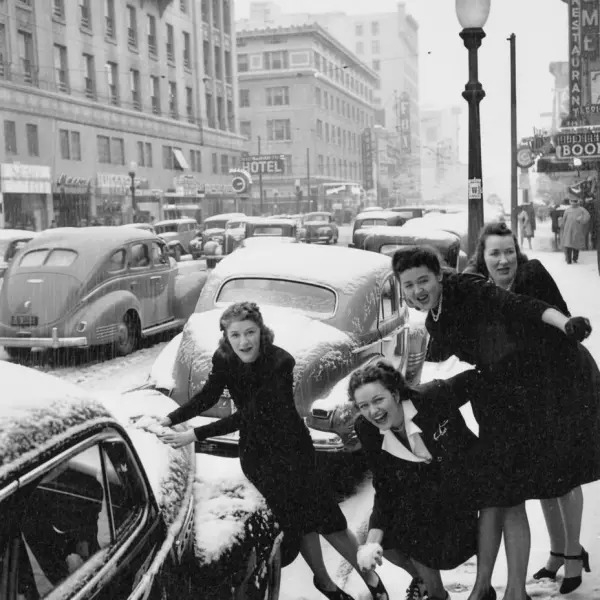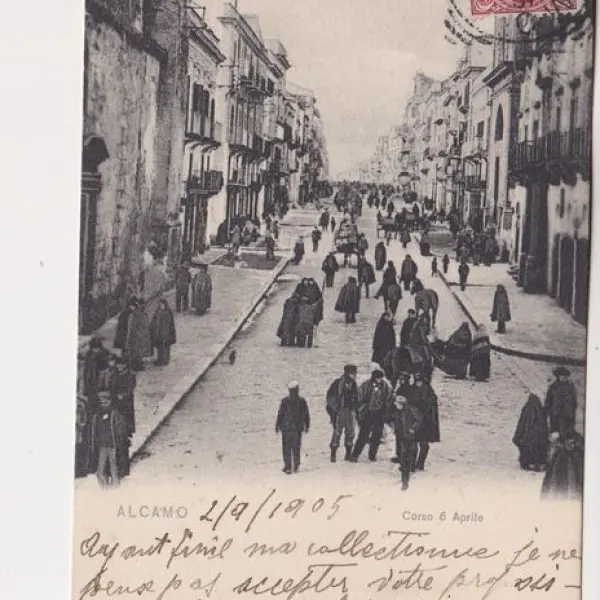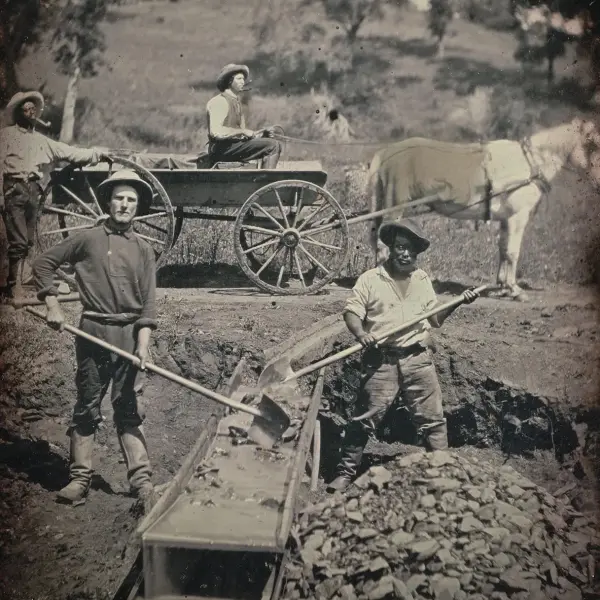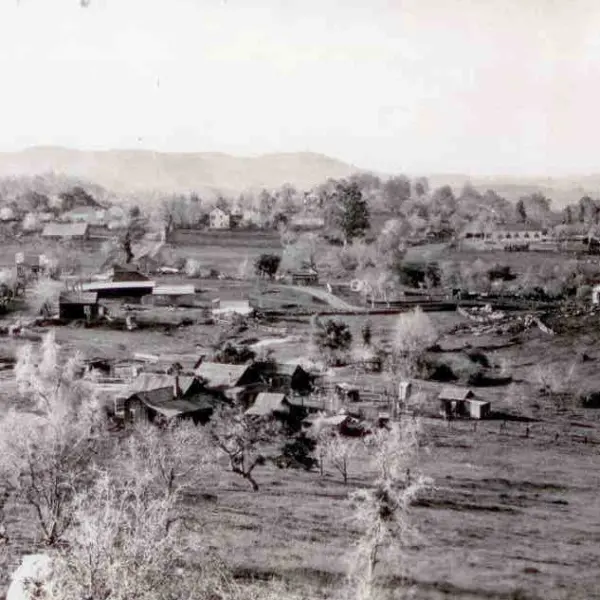A view of downtown
The photograph titled A View of Downtown, 1890, taken in Sacramento, California, provides a compelling glimpse into the urban life and infrastructure of the city during the late 19th century, a period of rapid growth and development in the American West. The black-and-white image captures a bustling downtown street scene, showcasing the architectural and transportation features of Sacramento at that time.
Description of the Image:
The photograph depicts a wide, unpaved main street lined with multi-story buildings featuring ornate facades, characteristic of the Victorian architectural style popular in the late 1800s. These buildings, with their arched windows, decorative cornices, and brick or stone exteriors, suggest a thriving commercial district.
Horse-drawn carriages and wagons are prominently featured, traveling along tram tracks embedded in the street, indicating the presence of a streetcar or trolley system, which was common in growing American cities during this era. The horses and carriages highlight the primary mode of transportation before the widespread adoption of automobiles.
Pedestrians, dressed in period-appropriate clothing—men in suits and hats, women in long dresses—are seen walking along the sidewalks or crossing the street, adding to the lively atmosphere of a busy downtown area.
Overhead wires for streetcars or early electrical systems are visible, suggesting Sacramento’s early adoption of modern urban infrastructure. The street itself appears dusty and unpaved, typical of many Western cities before widespread paving in the early 20th century.
Historical Context:
In 1890, Sacramento was a significant city in California, serving as the state capital and a key hub for agriculture, trade, and transportation in the Sacramento Valley. The city had experienced rapid growth following the California Gold Rush (1848–1855) and the completion of the Transcontinental Railroad in 1869, which connected Sacramento to the rest of the nation and boosted its economy. By the 1890s, Sacramento was transitioning from a frontier town into a more established urban center, with a mix of wooden and brick buildings reflecting both its early boomtown roots and its growing prosperity.
This period was also marked by the post-Civil War economic expansion and the development of infrastructure like railroads, streetcars, and early electric lighting, which are hinted at in the photograph. Sacramento’s downtown, centered around areas like K Street (a major commercial thoroughfare), was becoming a focal point for businesses, government offices, and cultural activities. However, the city still retained some of its rough, frontier character, as seen in the unpaved streets and reliance on horse-drawn transport.
The photograph captures Sacramento at a moment of transformation, balancing its historical roots as a Gold Rush town with its emergence as a modern urban center in the American West. It reflects the optimism and energy of the Gilded Age, a time of economic growth and industrialization, but also the challenges of urban development, such as managing dust, traffic, and population growth.
General Commentary:
This image is a valuable historical document that illustrates the early urban landscape of Sacramento in 1890, showcasing its architectural heritage, transportation systems, and daily life. The ornate buildings and bustling street scene highlight the city’s importance as a commercial and political hub, while the horse-drawn carriages and tram tracks provide a snapshot of transportation technology before the automobile era. The photograph also evokes the broader context of Sacramento’s role in California’s history, from its Gold Rush origins to its position as a growing regional center. It serves as a testament to the city’s evolution and the dynamic changes occurring in the American West during the late 19th century.
Description of the Image:
The photograph depicts a wide, unpaved main street lined with multi-story buildings featuring ornate facades, characteristic of the Victorian architectural style popular in the late 1800s. These buildings, with their arched windows, decorative cornices, and brick or stone exteriors, suggest a thriving commercial district.
Horse-drawn carriages and wagons are prominently featured, traveling along tram tracks embedded in the street, indicating the presence of a streetcar or trolley system, which was common in growing American cities during this era. The horses and carriages highlight the primary mode of transportation before the widespread adoption of automobiles.
Pedestrians, dressed in period-appropriate clothing—men in suits and hats, women in long dresses—are seen walking along the sidewalks or crossing the street, adding to the lively atmosphere of a busy downtown area.
Overhead wires for streetcars or early electrical systems are visible, suggesting Sacramento’s early adoption of modern urban infrastructure. The street itself appears dusty and unpaved, typical of many Western cities before widespread paving in the early 20th century.
Historical Context:
In 1890, Sacramento was a significant city in California, serving as the state capital and a key hub for agriculture, trade, and transportation in the Sacramento Valley. The city had experienced rapid growth following the California Gold Rush (1848–1855) and the completion of the Transcontinental Railroad in 1869, which connected Sacramento to the rest of the nation and boosted its economy. By the 1890s, Sacramento was transitioning from a frontier town into a more established urban center, with a mix of wooden and brick buildings reflecting both its early boomtown roots and its growing prosperity.
This period was also marked by the post-Civil War economic expansion and the development of infrastructure like railroads, streetcars, and early electric lighting, which are hinted at in the photograph. Sacramento’s downtown, centered around areas like K Street (a major commercial thoroughfare), was becoming a focal point for businesses, government offices, and cultural activities. However, the city still retained some of its rough, frontier character, as seen in the unpaved streets and reliance on horse-drawn transport.
The photograph captures Sacramento at a moment of transformation, balancing its historical roots as a Gold Rush town with its emergence as a modern urban center in the American West. It reflects the optimism and energy of the Gilded Age, a time of economic growth and industrialization, but also the challenges of urban development, such as managing dust, traffic, and population growth.
General Commentary:
This image is a valuable historical document that illustrates the early urban landscape of Sacramento in 1890, showcasing its architectural heritage, transportation systems, and daily life. The ornate buildings and bustling street scene highlight the city’s importance as a commercial and political hub, while the horse-drawn carriages and tram tracks provide a snapshot of transportation technology before the automobile era. The photograph also evokes the broader context of Sacramento’s role in California’s history, from its Gold Rush origins to its position as a growing regional center. It serves as a testament to the city’s evolution and the dynamic changes occurring in the American West during the late 19th century.
Animal
Architecture
Building
Car
City
Horse
Horse Cart
Machine
Mammal
Outdoors
Person
Road
Street
Transportation
Urban
Vehicle
Wagon
Wheel
Contributed by OldPik on February 3, 2025
Image

You must be logged in to comment on the photos.
Log in
Log in














No comment yet, be the first to comment...